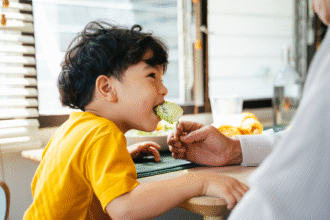Nursing Management of Cholelithiasis
Cholelithiasis, or gallstone disease, affects up to 20% of adults in Western countries and is a leading cause of biliary tract disorders. Gallstones may remain asymptomatic or precipitate biliary colic, cholecystitis, and life-threatening complications such as cholangitis and pancreatitis. Skilled nursing management—encompassing comprehensive assessment, targeted interventions, patient education, and collaborative care—optimizes recovery and fosters long-term health.
1. Definition and Epidemiology
- Definition: Formation of crystalline concretions within the gallbladder or biliary ducts, typically composed of cholesterol, bilirubin, or mixed constituents.
- Prevalence: 10–20% in adult populations; risk increases with age, female sex, obesity, multiparity, and rapid weight loss.
- Stone Types:
- Cholesterol stones (75–90%)
- Pigment stones (black—hemolysis; brown—infection)
- Mixed stones
2. Pathophysiology and Risk Factors
- Cholesterol Supersaturation: Imbalance in bile acids, phospholipids, and cholesterol leads to crystal precipitation.
- Gallbladder Stasis: Hypomotility in obesity, pregnancy, or prolonged fasting promotes nucleation.
- Inflammation & Infection: Mucin hypersecretion and bacterial enzymes accelerate stone growth.
- Genetic and Metabolic: Family history, hemolytic disorders, cirrhosis, and rapid weight loss.
3. Clinical Presentation
- Asymptomatic: Incidental ultrasound finding.
- Biliary Colic: Episodic right upper quadrant or epigastric pain, often postprandial, lasting 30–60 minutes.
- Acute Cholecystitis: Persistent pain, fever, leukocytosis, positive Murphy’s sign.
- Complications: Jaundice, clay-colored stools, dark urine, cholangitis (Charcot triad), gallstone pancreatitis.
4. Nursing Assessment
4.1 Subjective Data
- Pain characteristics: onset, intensity (0–10 scale), location, radiation, triggers, relief measures.
- Gastrointestinal symptoms: nausea, vomiting, bloating, intolerance to fatty foods.
- Past medical history: prior biliary episodes, comorbidities (diabetes, liver disease).
- Lifestyle: dietary patterns, alcohol intake, rapid weight changes.
4.2 Objective Data
- Vital signs: fever, tachycardia, hypotension.
- Abdominal exam: RUQ tenderness, Murphy’s sign, abdominal distention.
- Laboratory studies: WBC, liver function tests (AST, ALT, ALP), bilirubin, amylase/lipase.
- Diagnostic imaging: ultrasound (stones, sludge, gallbladder wall thickening), HIDA scan, MRCP/ERCP when indicated.
5. Nursing Diagnoses
- Acute Pain related to gallbladder distension and inflammation.
- Risk for Infection related to biliary stasis and surgical interventions.
- Imbalanced Nutrition: Less than Body Requirements related to dietary restrictions and postoperative fasting.
- Anxiety related to impending surgery and potential complications.
6. Nursing Interventions
6.1 Preoperative Care
- Provide emotional support; use clear, empathetic communication to explain diagnosis and surgical plan (laparoscopic vs. open cholecystectomy).
- Enforce NPO status; administer IV fluids and maintain electrolyte balance.
- Optimize nutrition: encourage high-protein, low-fat diet until preoperative period.
- Prepare for surgery: verify lab results, administer prophylactic antibiotics, ensure informed consent.
6.2 Postoperative Care
- Pain Management: Assess pain regularly; administer prescribed analgesics (PCA, NSAIDs) and employ nonpharmacologic measures (positioning, relaxation techniques).
- Respiratory Care: Encourage deep breathing, incentive spirometry, and early ambulation to prevent atelectasis.
- Gastrointestinal Management: Advance diet from clear liquids to low-fat meals as tolerated; monitor bowel sounds and abdominal distention.
- Drain and T-Tube Care: Maintain patency; record drainage output, color, and consistency; perform aseptic dressing changes and skin protection.
- Mobility and DVT Prevention: Assist with early mobilization; apply compression stockings or sequential compression devices.
- Monitoring: Check vital signs q4h, monitor for signs of infection, bile leak, or pancreatitis; assess fluid balance and I&O.
7. Patient Education
- Dietary Guidance: Adopt a low-fat diet rich in fruits, vegetables, and lean protein; avoid greasy, fried, and spicy foods.
- Activity Recommendations: Gradually resume daily activities; avoid heavy lifting for 4–6 weeks.
- Wound Care: Instruct on incision care, signs of infection, and when to seek medical attention.
- Self-Monitoring: Educate on recognizing complications such as fever, persistent RUQ pain, jaundice, and changes in stool or urine color.
- Follow-Up Plan: Schedule postoperative visits for wound assessment, laboratory tests, and T-tube removal if applicable.
8. Evaluation
- Pain score consistently ≤3/10 with stable vital signs.
- No evidence of surgical site infection or postoperative complications.
- Patient demonstrates correct wound care techniques and dietary adjustments.
- Patient expresses confidence in managing symptoms and adhering to follow-up care.
References
- Working Party of the British Society of Gastroenterology. Guidelines on the management of cholelithiasis. Gut. 2018.
- Strasberg SM. Clinical practice of laparoscopic cholecystectomy. Ann Surg. 2020.
- Portincasa P, et al. Cholesterol gallstone pathogenesis. Gastroenterology. 2020.
- SAGES Guidelines for laparoscopic gallbladder removal. Surg Endosc. 2019.







